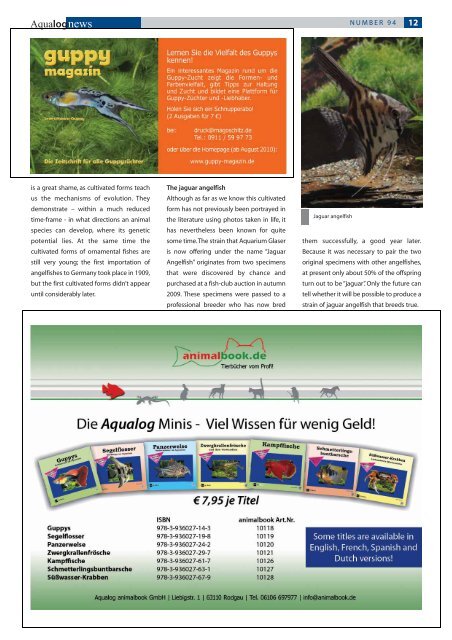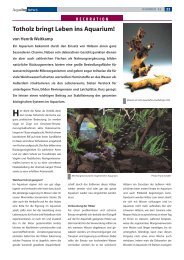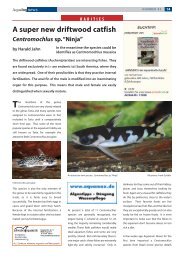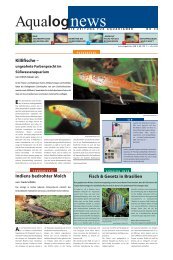LIVEBEARERS T Phallichthys tico - - a dainty new ... - Aqualog
LIVEBEARERS T Phallichthys tico - - a dainty new ... - Aqualog
LIVEBEARERS T Phallichthys tico - - a dainty new ... - Aqualog
You also want an ePaper? Increase the reach of your titles
YUMPU automatically turns print PDFs into web optimized ePapers that Google loves.
<strong>Aqualog</strong><strong>new</strong>s NUMBER 94 12<br />
is a great shame, as cultivated forms teach<br />
us the mechanisms of evolution. They<br />
demonstrate – within a much reduced<br />
time-frame - in what directions an animal<br />
species can develop, where its genetic<br />
potential lies. At the same time the<br />
cultivated forms of ornamental fishes are<br />
still very young; the first importation of<br />
angelfishes to Germany took place in 1909,<br />
but the first cultivated forms didn’t appear<br />
until considerably later.<br />
The jaguar angelfish<br />
Although as far as we know this cultivated<br />
form has not previously been portrayed in<br />
the literature using photos taken in life, it<br />
has nevertheless been known for quite<br />
some time.The strain that Aquarium Glaser<br />
is now offering under the name “Jaguar<br />
Angelfish” originates from two specimens<br />
that were discovered by chance and<br />
purchased at a fish-club auction in autumn<br />
2009. These specimens were passed to a<br />
professional breeder who has now bred<br />
Jaguar angelfish<br />
them successfully, a good year later.<br />
Because it was necessary to pair the two<br />
original specimens with other angelfishes,<br />
at present only about 50% of the offspring<br />
turn out to be “jaguar”.Only the future can<br />
tell whether it will be possible to produce a<br />
strain of jaguar angelfish that breeds true.







